26th May 2025
Dear Crina,
Firstly, thank you for agreeing to collaborate.1 I’ve really enjoyed our brief exchanges here and, now that I’ve translated your posts into English, I feel as though we may have some common interests. I like commenting on posts but writing more purposefully to someone feels really exciting. You seem to have lots of experience of collaborating with others so I hope you will forgive my inevitable clumsiness as we feel our way towards this new exchange.
As for the title of our letters to one another, I really like the Romanian translation of the ‘Experience of Space’ - Experiența Spațiului.2 I think it captures the physical distance separating us, a cultural, linguistic, as well as geographical difference, but also a shared interest in photography and its unusual relationship to three dimensional reality. Having looked at the bewitching images on your website, it’s clear that we see things very differently. I like that. Hopefully we can learn something from one another.
I really enjoyed reading your story about the abandoned swimming pool, especially Lysandria’s observation:
“Fotografiile sunt doar o formă de amnezie organizată,” râse Lysandria, turnând din nou vin în paharele de plastic. “Credem că ne ajută să ne amintim, dar de fapt ne ajută să uităm tot ce a rămas în afara cadrului.”
“Photographs are just a form of organised amnesia,” Lysandria laughed, pouring more wine into the plastic glasses. “We think they help us remember, but they actually help us forget everything that’s left outside the frame.”
I’ve been reading a lot about memory recently, partly prompted by a visit to The Warburg Institute. I saw a wonderful exhibition by Tereza Červeňová, the result of an inaugural residency, responding to the renovation of the building and specifically inspired by Aby Warburg’s photograph of a woman walking down a street in Settignano. I reacted powerfully to the exhibition, which included images of the building’s reconstruction process, portraits of young women architects and self-portraits. I visited twice and spent a long time looking at and thinking about the photographer’s nuanced and imaginative response to the brief. I found it very moving for reasons that I can’t quite put into words. I think it has something to do with my admiration for expressions of vulnerability.
Červeňová’s pictures of the building are sensitive and luminous. The poor old place looks a little sad with its guts exposed. There is one extraordinary image of a pool of blood-red paint, as if the viewer had stumbled upon the scene of a violent encounter. I returned to this image repeatedly, trying to make sense of its symbolism. Was this the consequence of a wound to the building, or had something else been ‘killed’, a monster at the heart of the labyrinth? Was I a witness to some kind of existential struggle?
Ambiguity and allusion appeared to be central themes. Scaffolding poles both supported and contained. Windows revealed and obscured. Červeňová appeared in different guises: as a floating apparition (reminiscent of Renaissance nymphs), almost disappearing in a long exposure; as distorted reflections in various surfaces; in profile, silhouetted against a window’s dusky light; and standing assertively, cable release in hand, returning the viewer’s gaze. She seemed both real and mythical, delicate and bold. Quite extraordinary.
The book of the exhibition, Nymph, is a beautiful thing and I love the way that Červeňová has combined images with text, sampled from interviews and letters. I like the way the pictures are in dialogue with the words, with the building, with Aby Warburg’s Bilderatlas Mnemosyne and with the artist herself. The book comes wrapped in patterned paper that refers to a sliver of birch bark, salvaged from trees that were removed from the courtyard of the Institute to make way for a new structure. The reader must remove this layer of skin, exposing the book beneath. A poignant reminder that beauty and loss are intertwined. Absence and presence. Appearance and disappearance. Destruction and renovation.
Červeňová has spoken passionately about the power of dialogue and stories to promote greater understanding:
If I’ve learned one thing over the years, it’s to listen to my intuition and trust that my voice deserves to be heard, even if it feels like the quietest or most forgettable one. As women, we owe it to ourselves and each other to keep advocating for our rights and freedoms. Although the discourse is evolving, the difficult conversations are still necessary. Art, with its unique power to tell stories, can spark these conversations and create spaces for reflection. Beyond bringing joy, art holds the potential to set the stage for important dialogues, inviting people to engage, question, and connect.
— Tereza Červeňová3
I really appreciated your response to my recent post about John Berger. It was slightly shocking to me that the contributions made by generations of feminist scholars to our understanding of art and its complex histories had been so easily dismissed by a young female writer. I was also really interested in your observation that A Fortunate Man had made you “try be a better person as a doctor”. I’d love to know more about this.
One of the books I stumbled across at the Warburg Institute was Frances Yates’ The Art of Memory.4 It’s helped me think about the relationship between physical structures, the passage of time, and the fascinating concept of the memory theatre/palace. I’ve been attempting to make photographs of buildings that respond to this idea but I’m finding it really hard. I don’t want to make architectural photographs but I also want to avoid anything too literal.
I’ve decided to take a break from this project and return to something more instinctive. Here are a few images from a recent outing with my half frame camera:
I’ve begun experimenting again with the Olympus Pen FT after spending a year or so working almost exclusively with medium format film cameras. I’ve found the quick, instinctive, chance-based process of this kind of shooting really liberating. I like to get the film scanned in pairs of frames, leaving the unexposed central black strip visible. They feel like notes, provisional, unresolved, low-stakes. Gestures rather than statements.
I remember seeing Luke Fowler’s exhibition at the Tate of his Two Frame Films in 2012.5 There’s a lovely book version published by Mack. I was fascinated by the diptych format and the role that chance plays in the relationship between the two frames.6 With 72 photographs to make, it’s almost impossible to keep track of the sequence (unless you make them in a short space of time). Inevitably, therefore, pictures from different times and places become randomly associated.
Take this example from Two Frame Films. These two pictures may even have been made in different countries, continents or time zones. Two windows, one suffused with light, the other cloaked in darkness. One view whole and frameless, the other jagged and edged. One describing a mountain range, the other alluding to snowy peaks, inverted as a pain of smashed glass. Distance and closeness. Both inside-out, so to speak.
I took my half frame camera to New Zealand in 2018 when I visited my brother, who lives there. At the time it felt like a risk to document such a momentous trip only on film, using this format, but I’ve always enjoyed a creative constraint. At the time I was reading Jane Bennett’s fantastic book Vibrant Matter. In it, she refers to Deleuze and Guattari's notion of the "nomadism" of matter:
Playing on the notion of metal as a conductor of electricity, they say that metal "conducts" (ushers) itself through a series of self-transformations, which is not a sequential movement from one fixed point to another, but a tumbling of continuous variations with fuzzy borders.
The phrase “fuzzy borders” really struck a chord, specifically in relation to my half frame photos.
The pictures seemed to allude to the distance separating my brother and I, literally half the world, and our desire to re-connect. A border, for sure, but soft and permeable. I didn’t get to see any of the images until I returned home, separated again by 11,000 miles.
Perhaps our collaboration is also analogous to a half frame photograph? Divided and joined. Connected by chance. A fuzzy border. Graniță neclară.7
Looking forward to your Experiența Spațiului!
Your photography friend,
Jon
I’ve adopted your strategy of including some music in these letters. This is a song I’ve been listening to a lot recently. I’ve been a fan of Forster’s music since I was 18 (when he was in the Go-Betweens) and I’m looking forward to seeing him again in October with his new Swedish band. That’s 42 years of musical devotion! He’s playing in Vienna on 2nd October. I think that’s the closest to you ;-) The song Strawberries is a kind of conversation between the Australian Forster and Karin, his German wife, in which they ask “What can ordinary be?”
These posts will always be free but, if you enjoy reading them, you can support my analogue photography habit by contributing to the film fund. All donations of whatever size are very gratefully received.
Hopefully, this is the first in a sequence of letters to and from Crina Prida, a fellow photographer and blogger, an experiment in continental collaboration. Crina is based in Romania and I’m in London. We found each other on Substack and, after a few brief comments and chats, decided to write to one another using this platform as our mail service.
A phrase borrowed from one of Gaston Bachelard’s books on science, ‘The Experience of Space in Contemporary Physics’. Bachelard is more commonly known as the author of ‘The Poetics of Space’, 1964.
Fowler was nominated for the Turner Prize in 2012 alongside Spartacus Chetwynd, Paul Noble and Elizabeth Price.
I decided to buy a relatively inexpensive Olympus Pen FT on eBay. Designed by the legendary Yoshihisa Maitani, also responsible for the equally revolutionary Olympus OM-1 and XA, I love everything about this camera - the compact size, the sharpness and speed of the f/1.8 38mm lens, the curious EV light meter and the sideways rotary shutter that makes the most satisfying clunk. Although film is still outrageously expensive, getting 72 pictures from a roll of 36 feels like a bargain.
This is what Google Translate suggested.






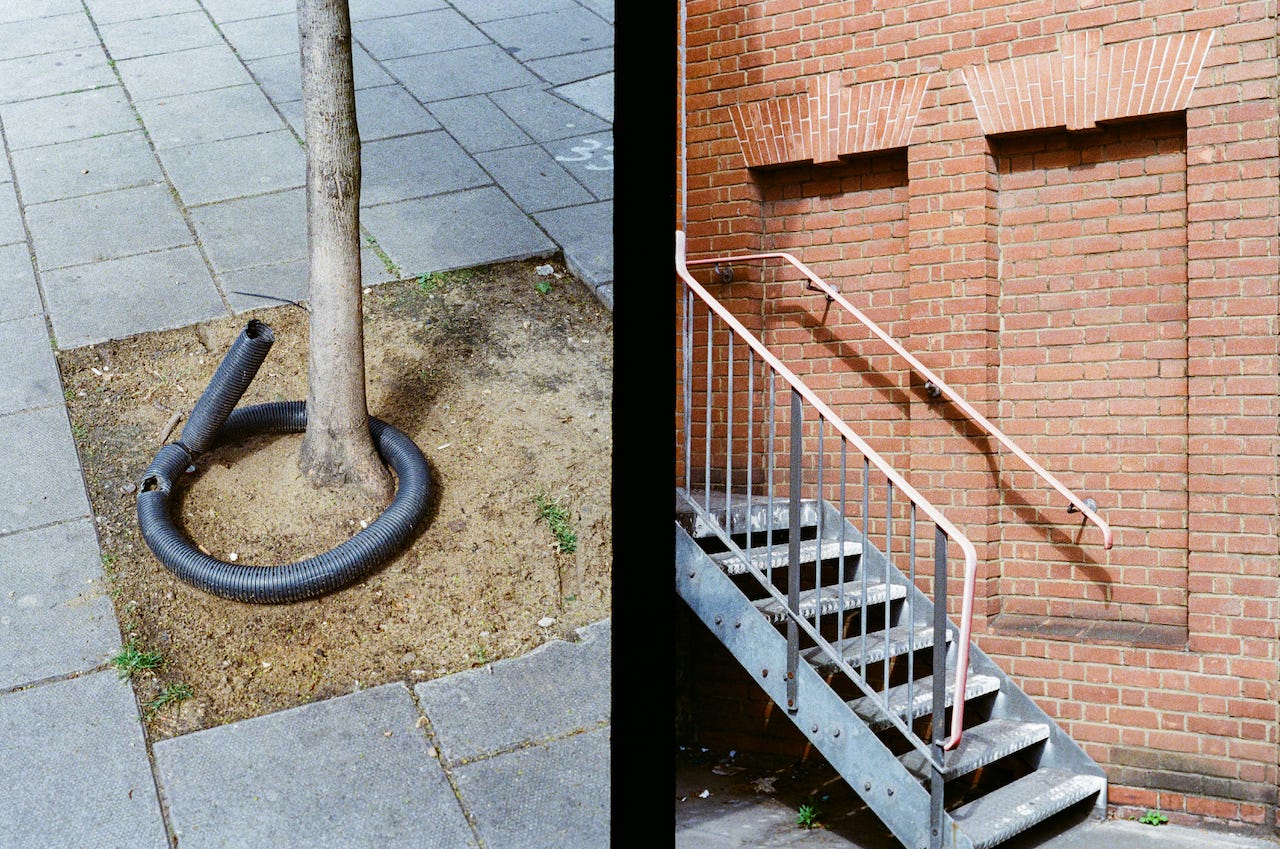
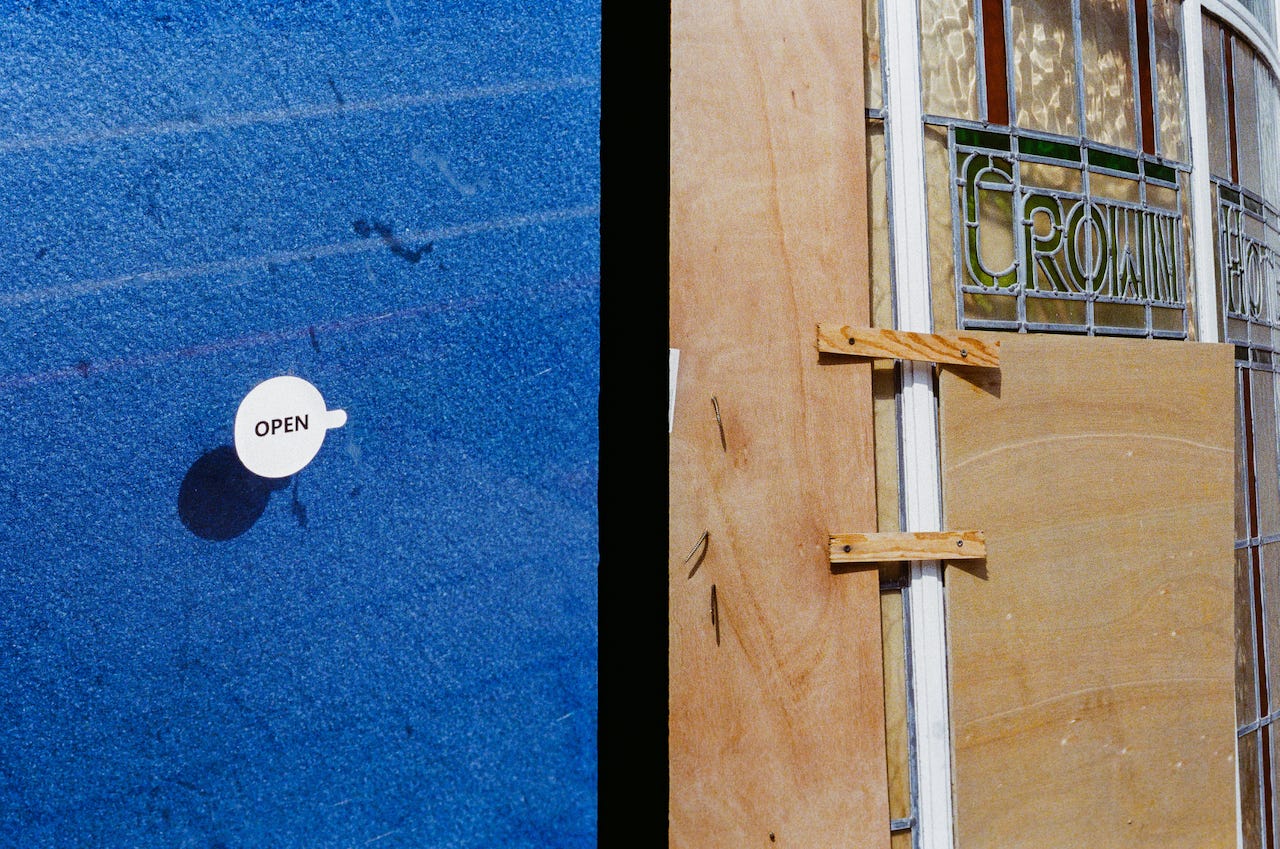
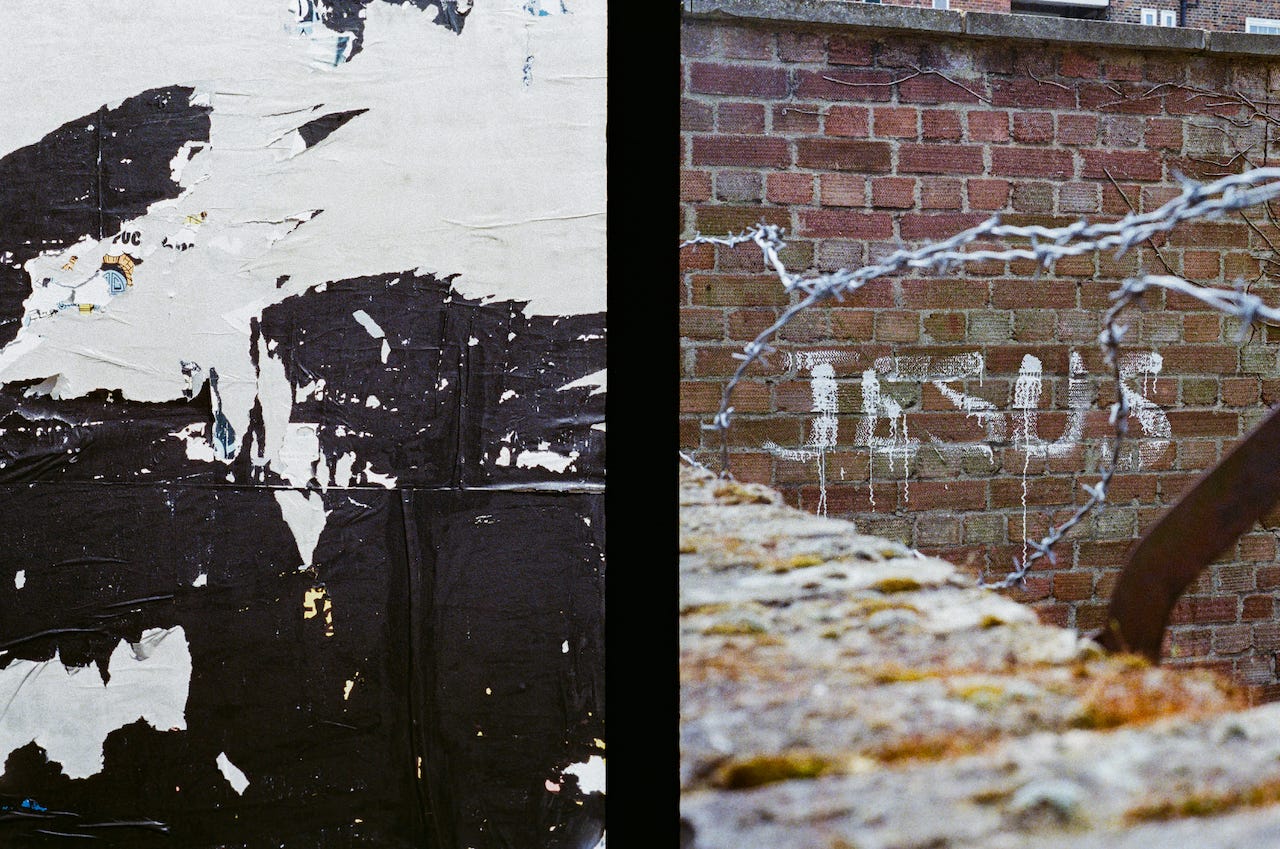
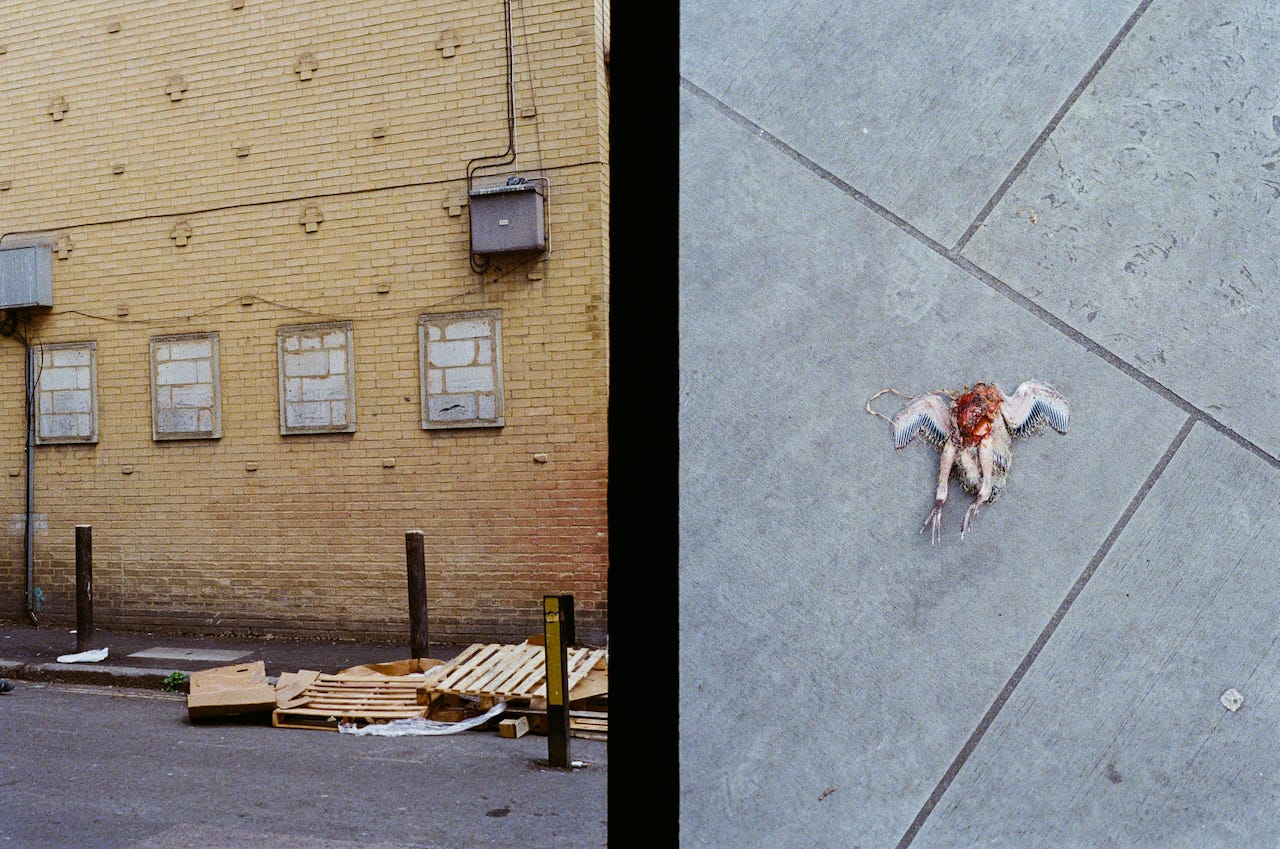
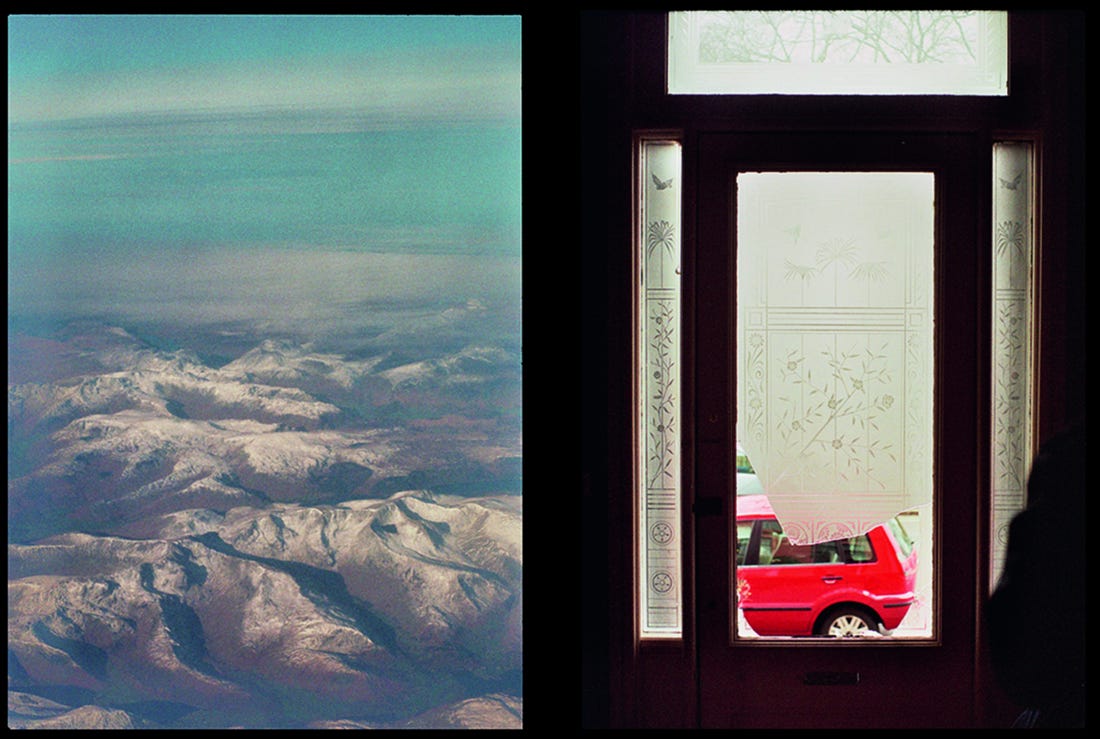

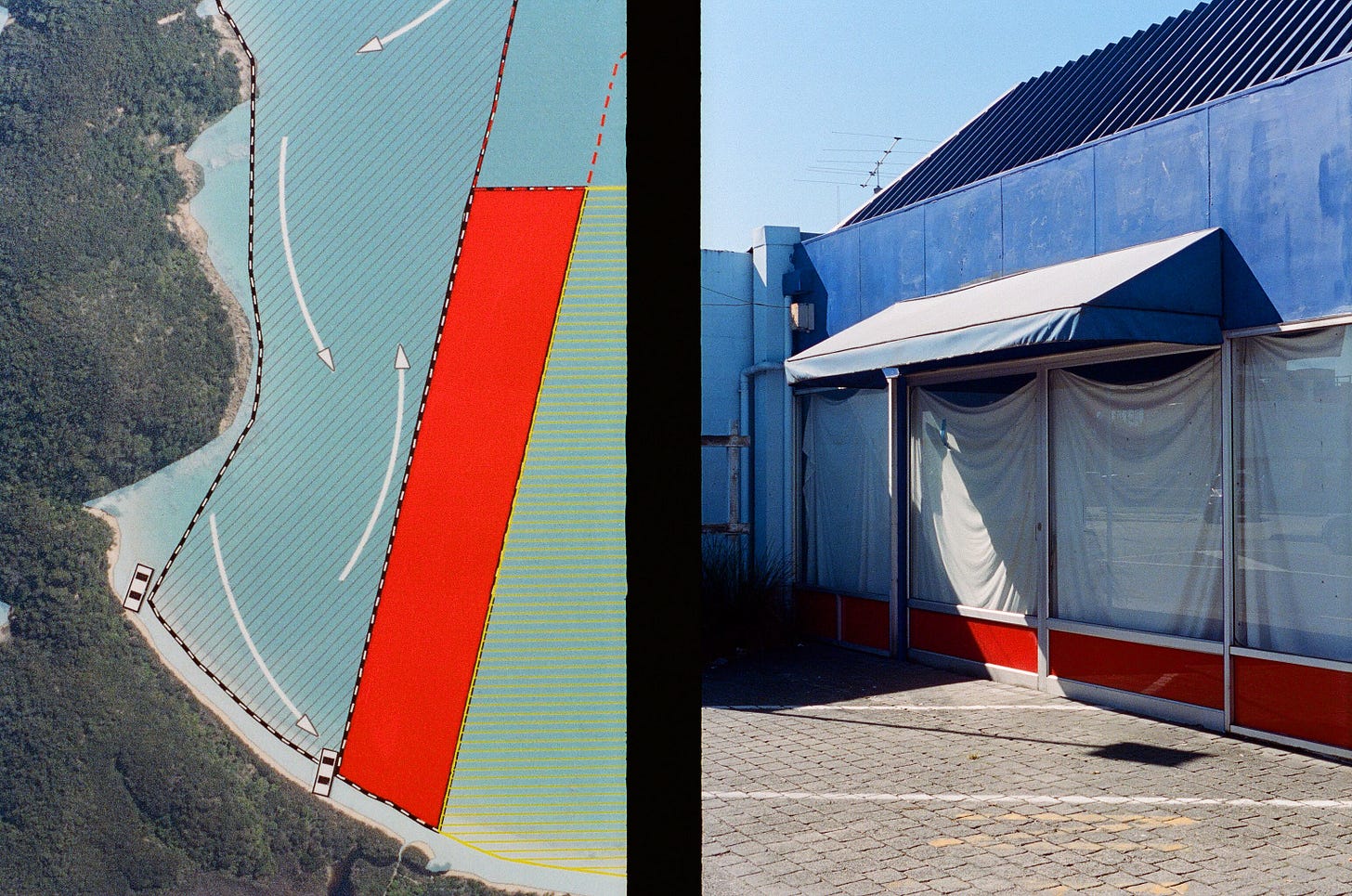
Love these diptychs. Have just been looking at the Luke Fowler book and it is stunning (plus I recognise quite a few of the people).
I heard Robert Forster's Strawberries on the radio the other day and knew immediately that you'd love it. What a coincidence.